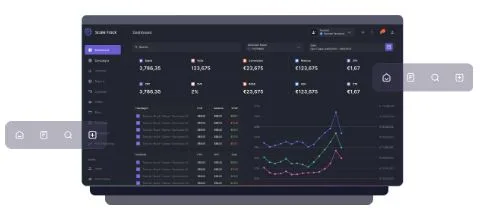What is the Medical Billing Process and Why Does it Matter?
When the patient hands over their insurance card, the next question that often comes to the mind of the healthcare provider is how and when the hospital will get paid? Well, the answer lies in the medical billing process.
The medical billing process is an important workflow for healthcare organizations and clinics as it keeps the revenue flowing, claims compliant, and cash cycles predictable. However, due to the complexity of the process, it becomes the reason for delays, denials, and lost revenue.
Let’s understand how medical billing works and why it matters for administrators, providers, and billing providers to keep the reimbursement process accurate.
Did You Know?
- In insurance claims, approximately 30% are rejected initially when they are presented, usually because of avoidable coding mistakes or documentation mistakes.
- The healthcare system in the U.S. is losing more than $30 billion annually to wrong or incomplete billing and claim processing.
- Almost 45% of insured patients are given a bill that they were not anticipating, typically due to a lack of understanding of the coverage or billing communication.
- Approximately 15% of dental insurance claims are rejected at the first instance, which causes delayed payments and additional administrative efforts on the part of the practices.
What Is Medical Billing?
Medical billing is the structured process through which healthcare services are translated into standardized codes, submitted to insurance companies, and processed for reimbursement.
It acts as the financial communication system between healthcare providers and payers, ensuring that the care delivered to patients is accurately recorded, validated, and billed. This process requires careful coordination of clinical documentation, coding knowledge, insurance policy rules, and regulatory compliance.
Effective medical billing supports the financial health of healthcare organizations and allows providers to focus on delivering quality patient care rather than administrative complexities.
Why Does the Medical Billing Process Matter?
The medical billing process is important as it directly affects the effectiveness of the healthcare practices and the ease with which patients go through their treatment process.
When billing is done properly, money is collected at the right time, there is minimal claim denials, and the financial responsibility of the patients is well explained. This helps in enhancing provider-patient trust, predictable cash flow, and stability of healthcare organizations.
However, inaccurate or incomplete billing may cause financial losses, administrative burden, patient confusion, and compliance risks. An effective billing procedure promotes equity, accountability, and continuity of care.
Benefits of the Medical Billing Process
The medical billing process should not be considered as mere paperwork; rather, it ensures that healthcare providers are accurately reimbursed for the care they deliver. Here are the benefits of it:
- Enhanced Reimbursement Effectiveness
Codes are coded correctly, and claims are fully submitted, which enhances the chances of prompt payments.
- Greater Financial Stability
A stable and controlled billing process facilitates stable income and business forecasting.
- Reduced Claim Denials
The correct documentation and coding minimise errors that usually result in claim denials.
- Increased Patient Knowledge
Effective communication of billing assists the patient to understand what is paid by insurance and what they should pay.
- Increased Audit Safety and Compliance
The compliance with billing standards and regulations reduces the legal and audit risks.
- Optimized Administrative Process
Systematic billing procedures minimize rework, follow-up pressure, and administration overload.
Step-by-Step Medical Billing Process
Here is a clear, step-by-step breakdown of how the medical billing process works and the role each stage plays in ensuring accurate reimbursement and a smooth patient experience:
Step 1: Patient Registration
The patient data is gathered, such as demographics, contact, insurance, and eligibility. This is a preliminary measure that will make the provider certain and precise information prior to the commencement of care. Proper data in this case will eliminate any claims mistakes in the future and minimize the chances of any claims being rejected because of incorrect or missing information.
Step 2: Insurance Checking
The billing team of the provider ensures that the patient is covered, benefited, has deductibles, copays, and preauthorization. This will make the services provided billable. The check-up will avoid unforeseen out-of-pocket expenses on the part of the patient and guard the practice against offering non-covered services without financial understanding.
Step 3: Services Documentation
The provider records the diagnosis, treatment, procedures, and clinical notes during the visit. Proper documentation is the foundation of proper coding and submission of claims. Well-documented medical necessity proves to be in line with insurance and regulatory requirements.
Step 4: Medical Coding
Certified coders encode the diagnoses and services to standard ICD-10 and CPT codes. Coding well will make the payers aware of the care given and reimburse it accordingly. Coding is a link between clinical care and financial claims, and therefore accuracy is critical to fair compensation.
Step 5: Charge Entry
The coded data is inputted in the billing system and the relevant charges. Here, precision has a direct influence on the success and the level of reimbursement of the claim. Any small data mistakes at this point may lead to delays or denial of payments.
Step 6: Claim Submission
This statement is checked and sent electronically to the insurance payer via a clearinghouse. Clean claim filing lowers the denials and speeds up the payment. Error checks are also carried out by clearinghouses so that claims are not rejected on grounds of formatting errors.
Step 7: Payer Adjudication
The insurance company assesses the claim, verifies coverage, evaluates medical necessity, and pays, pays part or denies the claim depending on the terms of the policy. This step is an indicator of the congruency of the documentation, coding, and submission with the requirements of the insurer.
Step 8: Payment Posting
Approved payments are charged to the account of the patient. Any changes, balances outstanding, or denials are logged to be followed up or checked. This measure ensures that financial records are kept accurate and outstanding balances are properly monitored.
Step 9: Patient Billing
Any balance left after insurance payment is sent to the patient by statements. Effective communication of billing makes patients know what to do. Clear statements minimize misunderstandings, disagreements, and delays in payments.
Step 10: Denial and Appeal Management
In case of a denial of a claim, the billing team inquires why it was denied, corrects mistakes, files appeals, or resubmits claims to achieve reimbursement. Proper management of denial helps to safeguard the revenue of the practice as well as to compensate for the justified services in a proper manner.
Key Challenges in Medical Billing
Here are some challenges that affect the medical billing process:
- Continuous Changes in Coding and Compliance Regulations
Medical billing professionals should always keep up with changes in ICD-10, CPT, and payer-specific billing regulations. Such changes involve constant training and system modifications in order to keep accuracy and prevent fines.
- Poor Clinical Documentation
In a case where patient encounters are not documented in a clear and comprehensive manner, billing teams are not able to show medical necessity to insurers. That leads to refusals that need time-intensive clarification and appeal.
- Large Denial and Rejection Rates of Claims
Mistakes in patient data, coding, or insurance checks tend to cause denials, which disrupt the cash flow. There are a lot of practices without systematic denial management workflow, and the revenue is not collected.
- Complicated Interaction Between Administrative and Clinical Teams
Front-desk registration, clinical documentation, and billing operations should be synchronized. Any disconnect can lead to the risk of wrong eligibility checks, preauthorization omissions, or wrongly billed procedures.
- Less Transparency
The increasing deductibles and cost-sharing demand practices to be more communicative and transparent on billing. Patient payments are usually delayed without open financial discussions.
How Medical Billing Companies Add Value?
Here is how professional billing companies enhance both financial performance and patient experience:
- Extensive Industry Knowledge and Regulatory Familiarity
Billing companies constantly track the updates of the payers, federal regulations, and coverage trends, and make sure that the claims are submitted properly and in a compliant manner.
- Optimized Revenue Cycle and Quickened Turnaround
Billing companies reduce the time taken to receive reimbursements and decrease the time taken to recover outstanding accounts receivable by streamlining the coding, filing claims, and follow-up processes for optimize revenue cycle management.
- Devotional Denial Resolution and Appeals Support
An organized method of investigating, rectifying, and re-processing denials will make sure that the legitimate revenue is reclaimed in an efficient way, as opposed to being written off.
- Less Paperwork on the Part of the Staff
By outsourcing billing, clinical and front-office teams can work on patient communication, care delivery, and further operational development.
- Intelligent Performance Reporting
Analytics dashboards showcase the efficiency of collection. They also portray reimbursement trends, coding trends, and unclaimed revenue opportunities, empowering smarter business decisions.
Why Use a Medical Billing Software Company?
Here is why practices benefit from implementing modern billing software systems:
- Automation of Monotonous Workflows
Claims, code matching, file submission, and flagging errors can be generated automatically through systems, and less manual effort and chances of errors are minimized.
- Live Eligibility and Benefit Checking
The insurance of software checks is obtained immediately, avoiding cases of services being performed and not being covered.
- Efficient Patient Billing
Electronic invoices, SMS notifications, and web-based payment systems assist clients in comprehending their balances and paying them conveniently.
- Unified Clinical and Financial Records
The continuity, accuracy, and effective auditing are supported when documentation, coding, and billing data are stored in a single platform.
- Enhanced Cash Flow Forecasting
Revenue analytics and practice dashboards enable managers to track receivables, forecast revenue, and staffing or expansion with confidence.
Future Trends in Medical Billing
Here is what will shape the evolution of billing in healthcare:
- Artificial Intelligence-Based Coding and Predictive Denial Analytics
The coders will be assisted with even more advanced machine learning tools that will propose the most correct codes, and which claims can be rejected prior to submission.
- Extensive Implementation of Cloud and Interoperable System
Cloud-based solutions will enable healthcare teams to work both in different places and keep a high level of data security and HIPAA compliance.
- Expectations of Greater Patient Cost Transparency
Patients will demand transparent cost estimates prior to treatment and online alternatives in terms of bill review and payment.
- Combination of Remote and Virtual Care Billing Standards
With telehealth becoming a fixed care paradigm, reimbursement systems will grow and institutionalize around digital care.
- Outcome-Based Reimbursement Models
Healthcare organizations will be increasingly measured and compensated on the basis of patient outcomes, quality indicators, and preventive care success as opposed to just volume of services.
Technologies That Support the Medical Billing Process
Here are the softwares that can make the medical billing process streamlined, especially if you are doing it in-house:
| Technology | What It Helps With | Why It Matters |
| Practice Management Software | Scheduling, records, billing, and claims in one place. | Keeps daily operations organized and efficient. |
| EHR/EDR Systems | Stores treatment notes and clinical history. | Provides the documentation needed to support claims. |
| Clearinghouses | Send claims electronically and check for errors. | Reduces denials and speeds up insurance payments. |
| Eligibility Verification Tools | Confirm patient insurance coverage instantly. | Prevents billing surprises for both patient and provider. |
| Coding Assistance Software | Suggests the most accurate procedure and diagnosis codes. | Helps reduce mistakes that lead to claim denials. |
| Revenue Cycle Management Tools | Tracks claims, follow-ups, and outstanding balances. | Keeps cash flow steady and predictable. |
| Patient Payment Portals | Online bill viewing and payment options. | Makes paying easier and improves patient experience. |
| Automated Reminder Systems | Sends appointment and billing reminders. | Helps reduce missed visits and late payments. |
Conclusion
Medical billing is much more than a back-office activity. It is a critical system that determines the efficiency of a given practice, the extent to which patients are aware of their care costs, and the extent to which providers are paid as expected to carry out their duties.
Billing, when done correctly, documented, and managed well, reinforces the financial base of a healthcare organization and also helps in providing the patient with a hassle-free, stress-free experience. With the changing nature of billing systems, payer requirements, and patient expectations, collaborating with skilled billing professionals and adopting effective billing technology can help practices to be stable, compliant, and patient-centered.
CEC is here to assist you in enhancing efficiency, minimizing denials, and developing a more predictable revenue cycle. Discover how outsourcing professional billing assistance can assist your practice to run with certainty and understanding.
Frequently Asked Questions (FAQs)
1. What is the main purpose of the medical billing process?
The main aim of the medical billing procedure is to codify healthcare services and file claims to be reimbursed so that medical care providers are paid and patients are charged accordingly depending on their insurance benefits.
2. How does accurate documentation affect medical billing success?
Proper coding is provided through accurate documentation and proves medical necessity. Clearly documented clinical notes minimize claim denials, accelerate reimbursement, and create the necessary records to facilitate audits and insurance reviews.
3. Why do claim denials happen in medical billing?
Denials are usually made because of incomplete patient information, wrongful coding, lack of previous authorization, or lack of documentation. These problems can be avoided through regular checking and examination.
4. How does outsourcing medical billing help healthcare practices?
Outsourcing enables trained billing personnel to handle the code, claim, denial, and reimbursement functions, relieving the staff of administrative overhead and enhancing the efficiency of cash flow in the practice.
5. What role does billing software play in improving the revenue cycle?
Billing software automates claims and checks insurance eligibility in real time. It arranges patient balances, and offers financial analytics, resulting in quicker reimbursements and better-informed practice management.






